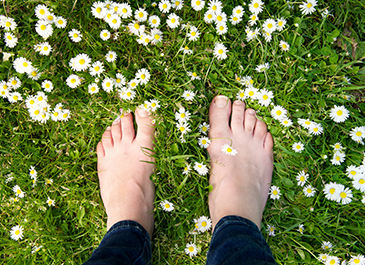For those living with diabetes, foot conditions can be a common problem. Affecting the circulatory and immune systems, diabetes impairs the body’s ability to heal itself and, over time, can cause damage to the sensory nerves in the hands and feet. For those with diabetes, foot injuries such as blisters or cuts often go unnoticed and untreated, which may lead to infection and serious complications.
Developing proper foot-care habits will help prevent complications and will keep your feet healthy. Have a foot care kit containing nail clippers, a nail file, lotion, a pumice stone and an unbreakable hand mirror on hand, and it will be easier to care for your feet. Below is a list of steps to include in your daily foot care routine:
• Wash your feet in warm—not hot—water, using a mild soap. Don’t soak your feet; this dries your skin.
• While your feet are still wet, use a pumice stone to keep calluses under control.
• Dry your feet carefully, especially between your toes.
• Thoroughly check your feet and between your toes to make sure there are no cuts, cracks, ingrown toenails, blisters, etc. Use a hand mirror to see the bottom of your feet, or ask someone else to check for you.
• Cover cuts or scratches with a dry dressing suitable for sensitive skin.
• Trim your toenails straight across and file any sharp edges. Don’t cut the nails too short.
• Apply an unscented lotion to your heels and soles, wiping off the excess. Don’t put lotion between your toes; the excessive moisture can promote infection.
• Wear fresh clean socks and well-fitting shoes every day. Whenever possible, wear white socks; evidence of a cut or sore will be easier to see through a white sock.
Be sure to consult your doctor if you notice any swelling, warmth, redness or pain in your legs or feet and have your bare feet checked at least once a year. In addition, ask your doctor to screen you for loss of circulation on a yearly basis.

